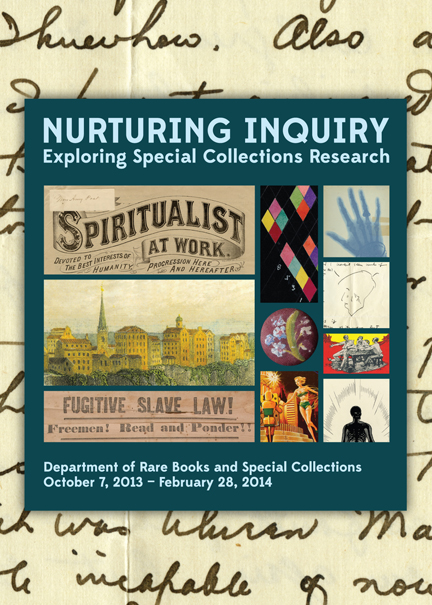On View: Nurturing Inquiry: Exploring Special Collections Research
I can’t speak for all academics, but personally I have a comforting little secret to air: despite the composed, jet-set, fellowship-laden, idea- and ambition-saturated veneer I might strive so desperately to affect for professional presentation, I often don’t know what I’m doing. This is especially true at the beginning of a major project, where I mostly don’t know what I’m doing. On darker days, it’s easy to get down on myself. On brighter days, I manage to remember that bringing genuinely interesting, well-developed new knowledge into the world is incredibly hard work—even for the pros. In the summer of 2012, following my second year of graduate school, I received a research grant from my alma mater, Oberlin College, to spend two months in Philadelphia laying groundwork for a dissertation prospectus. I had long been inspired by the exhibits and events hosted by the Visual Culture Program at the Library Company of Philadelphia, and the staff there in prints and photographs kindly let me take up residence in their study room for most of July and …

